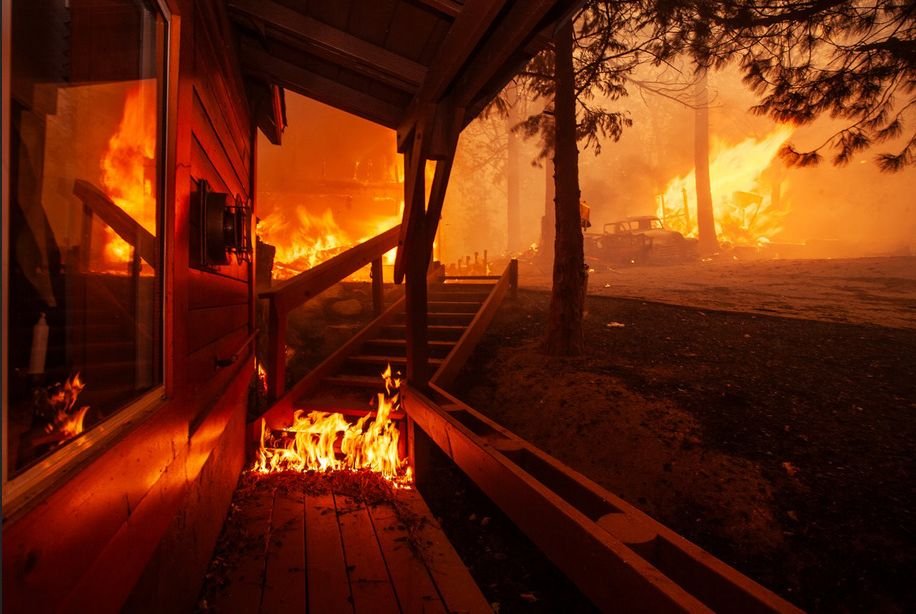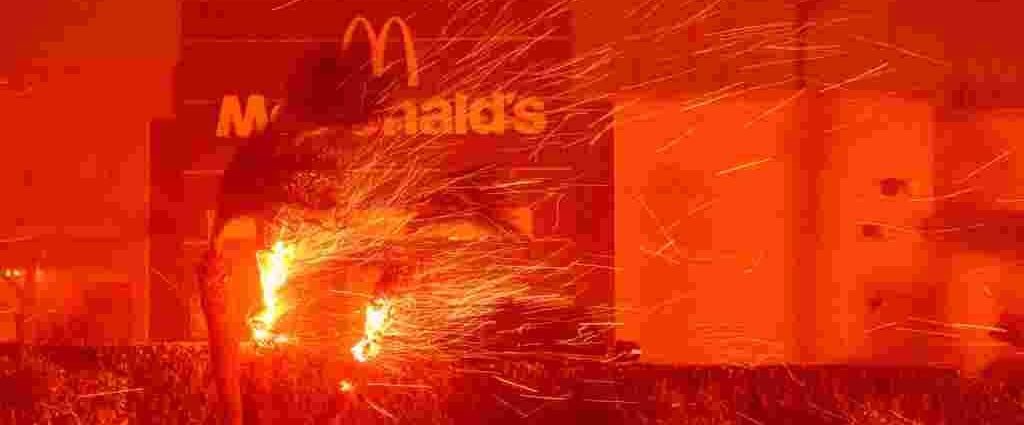Southern California faces an ongoing battle with large wildfires, especially near Los Angeles, forcing tens of thousands to evacuate. These fires, fueled by drought and high winds, show no sign of abating. The dry conditions, exacerbated by scarce rainfall during what should have been the rainy season, create a dangerous environment. The Santa Ana winds, with gusts reaching 100 mph, worsen the situation, spreading embers and intensifying flames.

a home burned down in the Smiley Park neighborhood of Running Springs, California during the 2007 Slide Fire.

Wildfires consume land at alarming speeds, traveling up to 14 miles per hour. Over the past two decades, wildfire destruction in the U.S. has doubled. Annually, about 72,400 wildfires burn 7 million acres, compared to the 1990s average of 3.5 million acres. California, in particular, experienced its worst fire season in 2020, with over 4 million acres scorched.
Climate change contributes to the increasing frequency and severity of wildfires. Rising temperatures and prolonged drought conditions dry out vegetation, turning it into flammable fuel. In California, average temperatures have risen by 3°F since industrialization, while reduced rainfall has dried out vegetation. As a result, wildfires have grown larger and more frequent, posing significant challenges to communities and ecosystems.
Although wildfires are classified as natural disasters, 85-90% stem from human activities, including campfires, discarded cigarettes, and arson. Naturally occurring wildfires ignite under specific conditions—dry weather, strong winds, and a heat source such as lightning or downed power lines. The fire triangle—fuel, oxygen, and heat—is essential for a wildfire to sustain itself.

Efforts to combat wildfires focus on breaking the fire triangle. Firefighters douse flames with water and fire retardants or create firebreaks by removing vegetation to cut off fuel supplies. Controlled burns, or backfires, are also used to remove potential fuel, preventing wildfires from growing larger.
Proactive management, including controlled burns and community awareness, remains critical to mitigating the devastating effects of wildfires in the future.
Reference- The Washington Post, National Geographic, BBC, The Guardian, Science, Vox






